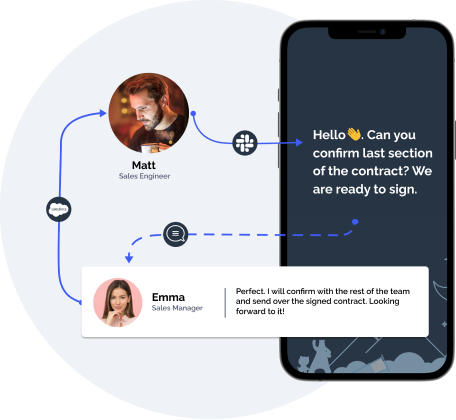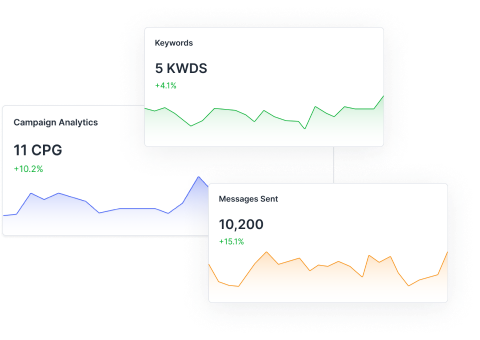Clerk - SMS for Salesforce
Send and receive text messages with your existing contacts, leads, and opportunities natively in Salesforce. Connect your existing Twilio, RingCentral account, or get a new number.
Send SMS from Salesforce
Send and receive text messages with your existing contacts, leads, and opportunities natively in Salesforce. Connect your existing Twilio, RingCentral account, or get a new number.
 Sales Teams Need SMS
Sales Teams Need SMSLong live e-mail and cold-calls. The easiest way to get in front of your potential and existing customers in the most personable way is via text messages. Connect Clerk in minutes and use SMS with the tools you already know and love.
Get started today
Texting, now inside Salesforce
Your team can now text leads
With an open rate of over 90% empower your sales team with SMS. Send important updates, reminders and information all through SMS - without leaving the Salesforce app.
A business phone made for sales teams
Leave text-thumb behind and let your sales team focus on what matters: closing deals. Clerk allows your sales team to connect with leads and creates a conversation history so they never miss a beat.
Send bulk SMS to multiple contacts
Forget about switching between apps, contacts and central sources of truth. With Clerk for Salesforce send a sequence of messages based on lead stage and send your contacts timely texts to ensure their attention to your product.
Salesforce Slack Integration
The power of Salesforce inside the beauty of Slack. Clerk is the first and only SMS app that allows conversations to be persistent across both Salesforce and Slack.
- Bi-directional
The power of Salesforce inside the beauty of Slack. Your customer conversations are synced between both platforms.
- Threaded
Your staff can now have their own private SMS channel or you can have a centralized inbox channel in Slack.
- Native
Bring compliance and control to Microsoft Teams by preserving records of all communication.
- Powerful
Respond faster to new opportunities and collaborate seamlessly with customers in both Salesforce and Slack.
Scheduled Slack SMS Campaigns
95% of SMS are read in the first 5 minutes. Included in all plans, you can start sending important alerts, thousands of messages, marketing campaigns or promotions in one click. You can even schedule multiple SMS campaigns minutes, days and weeks in advance.

Trusted by 1000+ Brands
From startups to the Fortune 500, Clerk Chat is the most compliant and simple way for your team to unlock conversational messaging, bridging customers, desk-less workers, staff and everyone in between, all within your organization.
